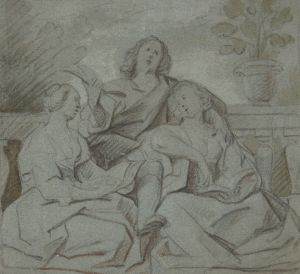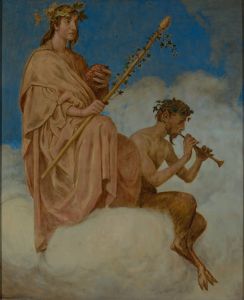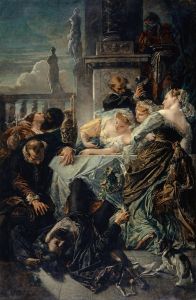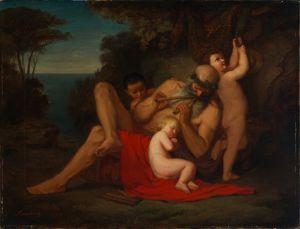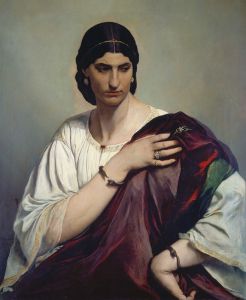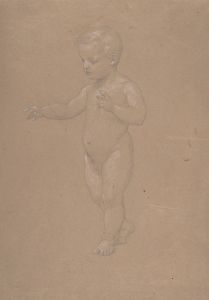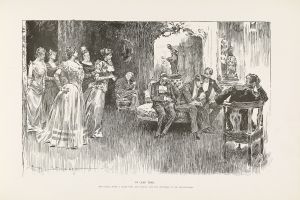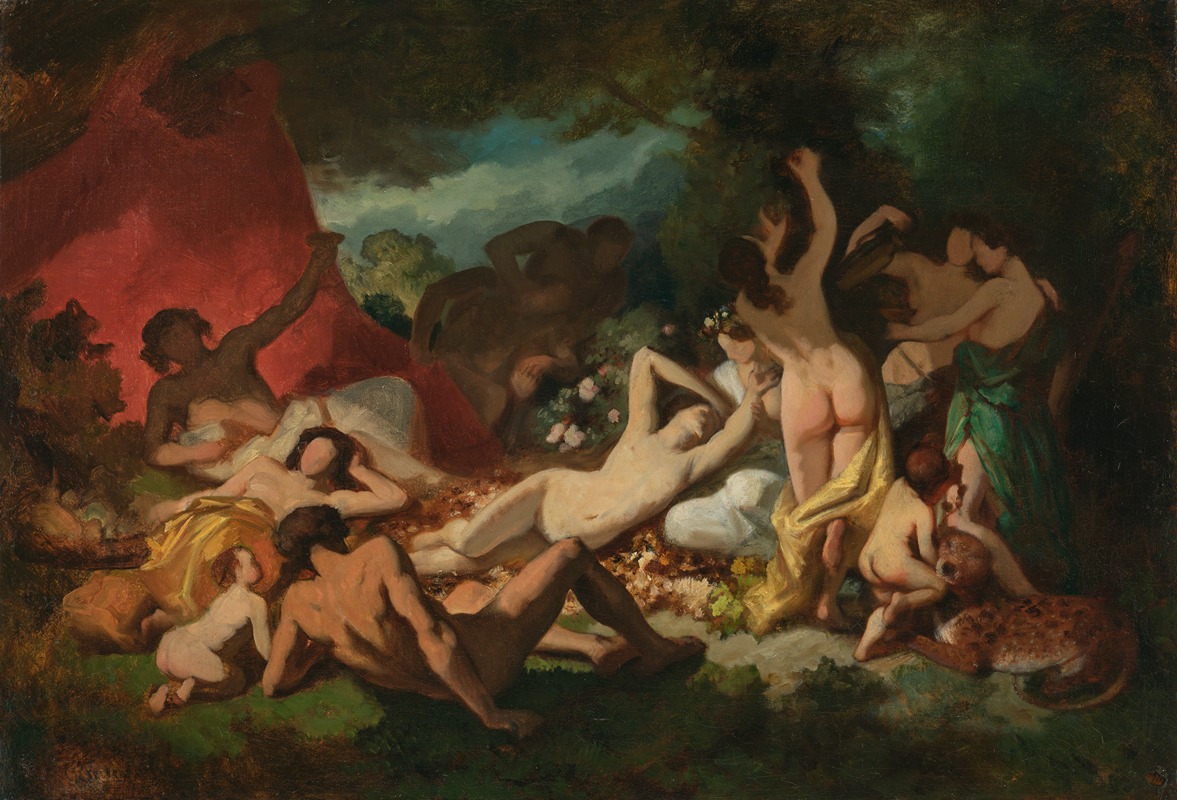
Bacchantic scene
A hand-painted replica of Anselm Feuerbach’s masterpiece Bacchantic scene, meticulously crafted by professional artists to capture the true essence of the original. Each piece is created with museum-quality canvas and rare mineral pigments, carefully painted by experienced artists with delicate brushstrokes and rich, layered colors to perfectly recreate the texture of the original artwork. Unlike machine-printed reproductions, this hand-painted version brings the painting to life, infused with the artist’s emotions and skill in every stroke. Whether for personal collection or home decoration, it instantly elevates the artistic atmosphere of any space.
Anselm Feuerbach's "Bacchantic Scene" is a painting created by the German artist Anselm Feuerbach, who is widely regarded as one of the most important painters of the 19th-century German art movement. Feuerbach was known for his classical style, inspired by ancient mythology and Renaissance art, and his works often depicted themes of beauty, mythology, and the human condition.
The painting "Bacchantic Scene" reflects Feuerbach's fascination with classical antiquity and his ability to reinterpret ancient themes through a 19th-century lens. The term "Bacchantic" refers to Bacchus, the Roman god of wine, revelry, and ecstasy, known as Dionysus in Greek mythology. Scenes described as "Bacchantic" typically involve figures engaged in celebrations, often characterized by music, dance, and a sense of abandon. Feuerbach's work captures this spirit, presenting a group of figures in a moment of festivity and sensuality.
The composition of the painting demonstrates Feuerbach's mastery of form and his attention to detail. The figures are arranged in a harmonious manner, evoking the balance and order associated with classical art. Feuerbach's use of light and shadow enhances the depth and texture of the scene, while his muted color palette lends the work a timeless quality. The figures in the painting are depicted with a sense of idealized beauty, reflecting Feuerbach's admiration for the art of the Italian Renaissance, particularly the works of Titian and Raphael.
Feuerbach created "Bacchantic Scene" during a period when he was deeply influenced by his studies in Italy, where he immersed himself in the art and culture of antiquity. His time in Rome and Venice played a significant role in shaping his artistic vision, and this influence is evident in the classical themes and techniques employed in the painting. Feuerbach sought to revive the grandeur of ancient art while infusing it with his own modern sensibilities.
The painting is considered an example of Feuerbach's ability to bridge the gap between the classical and the contemporary. It reflects his belief in the enduring relevance of classical ideals and his commitment to creating art that transcends time. Today, "Bacchantic Scene" is recognized as a testament to Feuerbach's skill as a painter and his dedication to the classical tradition.
Further details about the specific location or current ownership of the painting are not widely documented. However, Feuerbach's works are held in various collections and museums, particularly in Germany, where his legacy continues to be celebrated.






